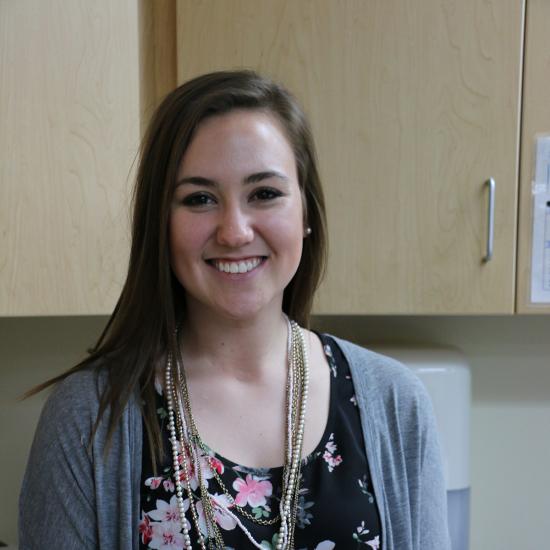Preparing for an Aging Minnesota with Volunteers and Community Engaged Learners
An estimated 10,000 Baby Boomers turn 65 every day. This major demographic shift will create new challenges for older adults who want to maintain independence, for caregivers who need formal and informal support, and for employers facing potential workforce shortages.
Bailey Ortiz will be prepared.
Ortiz, a student at the University of Minnesota, volunteers at the Wilder Community Center for Aging. On Wednesdays and some Saturdays, Ortiz spends time with participants in the Center’s Adult Day Health Program for adults with memory loss or other disabilities. Working alongside staff members, she joins in conversation, games, songs and activities and helps with snacks and meals.
“It’s a lot of fun,” says Ortiz, who plans to pursue occupational therapy. “I have networked and made great connections, and I’ve been able to see that this is really what I want to do.”
Aging Affects Everyone, Even Caregivers
That’s just the experience that Grant Watkins, the Center’s volunteer coordinator, wants students to have as Community Engaged Learners. This initiative gives college students an opportunity to learn how to drive social and economic change to meet the needs and challenges of our rapidly aging population.
“No matter what career path students choose in the future, somehow that career path is going to be affected by the changing age demographics,” Watkins says. For students with an interest in aging-related careers—like Ortiz—volunteering can be a way to gain work experience. But even people who do not plan to work directly with older adults will feel the effects of the shift, such as by caring for family members in addition to full-time work.
"A lot of young people aren’t aware of what’s happening with the changing age demographics,” Watkins says. “They need to prepare for it because it is going to impact everyone quite a bit.” In addition to a volunteer training that includes information about caregiving, dementia, nutrition, mental illness, elder abuse and other topics, Watkins asks Community Engaged Learners to use Minnesota Compass to become more familiar with demographic changes.
Bill Johnson, who owns an auto-remarketing business in Saint Paul and is finishing a degree at Metro State, became a Community Engaged Learner while taking a class that explored the effect of aging on society.
Johnson loved his time at the Center for Aging so much that he continued even after completing his course. “When you come here, people are kind, they are so loving,” he says, adding that he hopes to have this kind of environment available when he ages.
One-on-One Learning Experience, Broad Impact
Community Engaged Learners get one-on-one experience interacting with participants at Adult Day Health, they learn about Minnesota’s aging population, and they make valuable contributions to the interactive, welcoming environment at the Center.
The individual interaction can help Adult Day Health participants stay active throughout the day, Watkins says. This can help alleviate the reversal of sleep patterns often experienced by people with dementia and give caregivers more rest, too. “That individual support that our participants are getting helps everybody, and it’s a great learning environment for the students,” Watkins says.
Just as important as the benefits for students and participants is a benefit for everyone. By creating awareness of the changing age demographics in Minnesota, community members will be better prepared to handle the social and economic impact of this change.
